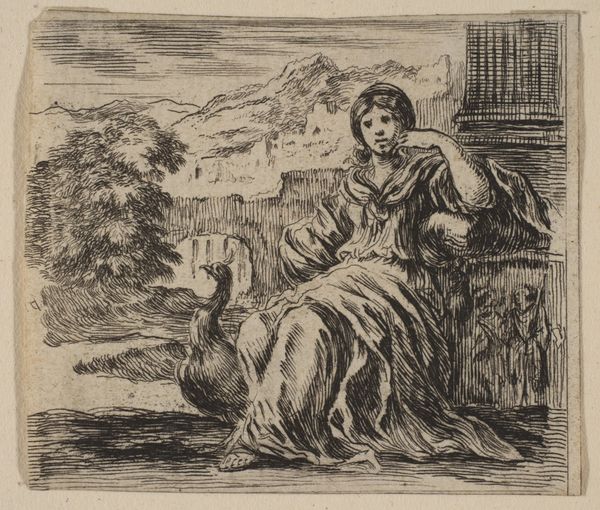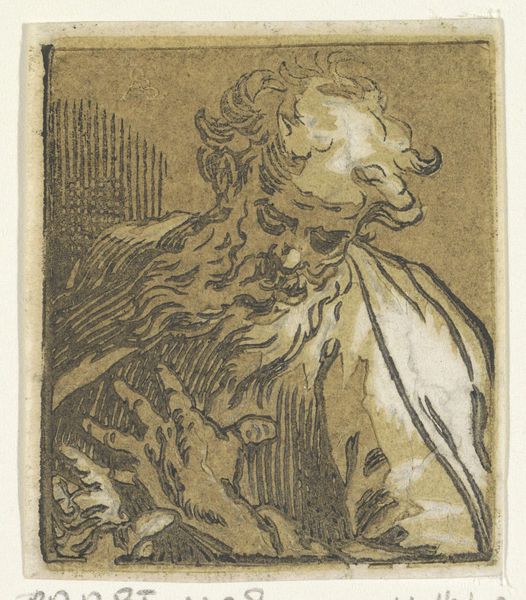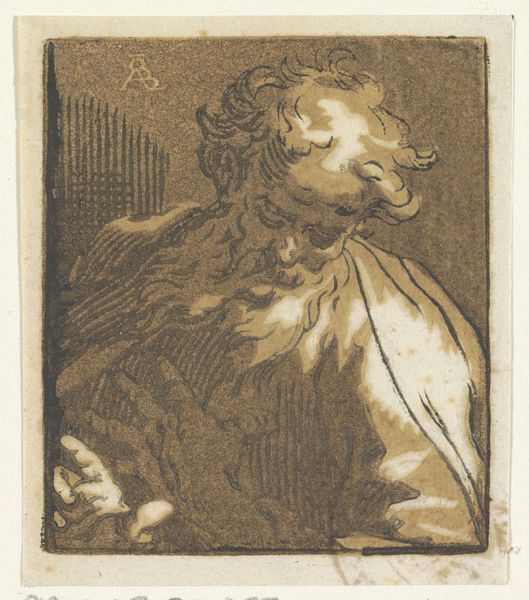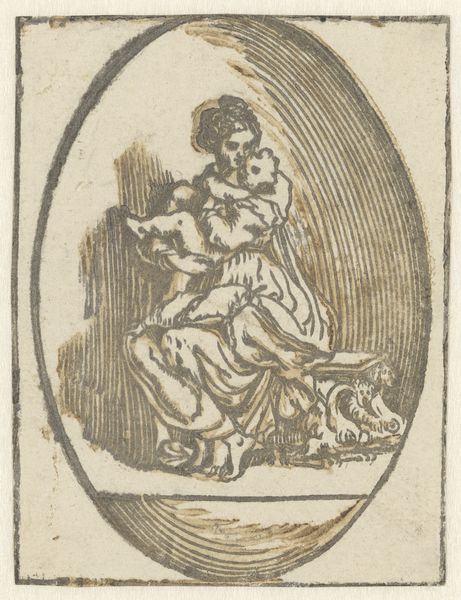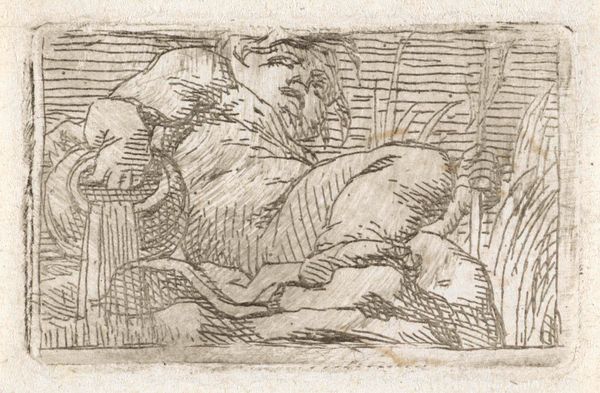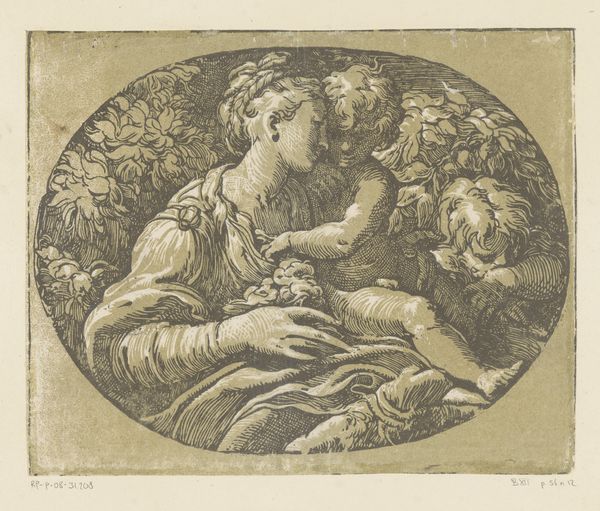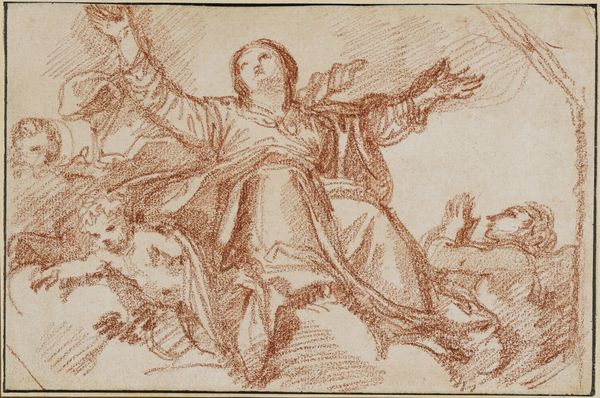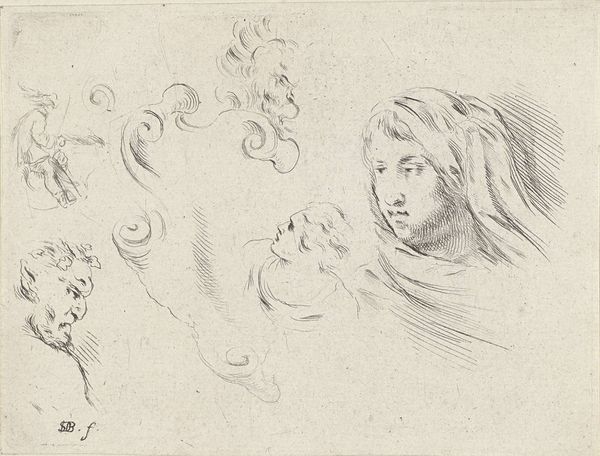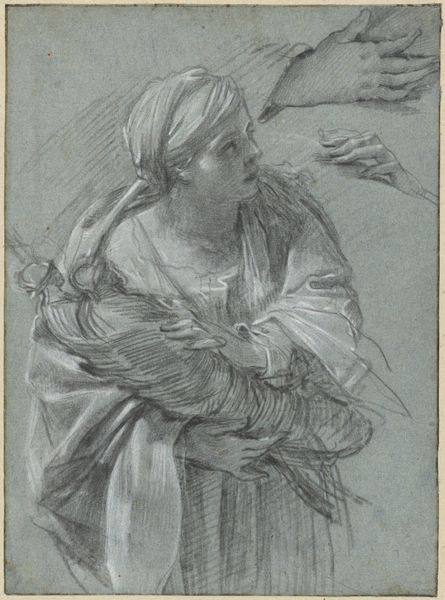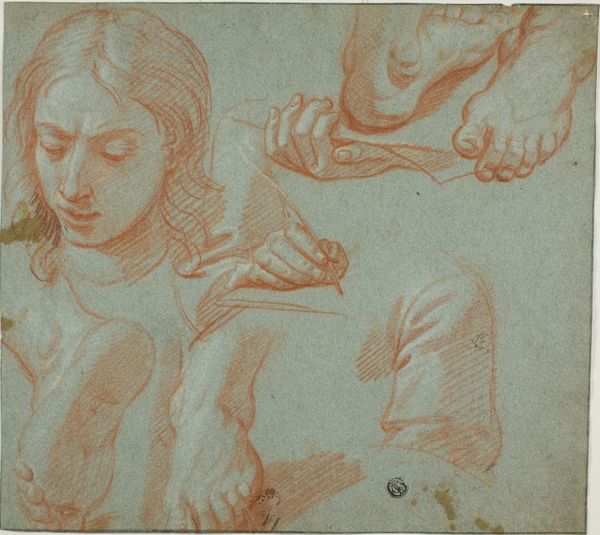
drawing, ink
#
portrait
#
drawing
#
ink drawing
#
baroque
#
ink
Dimensions: height 36 mm, width 75 mm
Copyright: Rijks Museum: Open Domain
This delicate rendering of 'Maria met vier cherubijntjes' was etched by Cornelis Schut, a Flemish artist active in the 17th century. Schut lived in a society deeply shaped by religious and political upheaval, including the Counter-Reformation. Here, Mary is depicted surrounded by cherubs, her gaze gentle yet firm. The intimate scale of the work invites us to contemplate the maternal and spiritual aspects of the Virgin Mary. There’s a tension in how Mary is represented, a mix of divine purity and human emotion. The cherubs, traditionally symbols of innocence, add a layer of complexity. What does it mean to depict Mary in this way, especially in a time of intense religious debate? How does the work reflect the artist’s own beliefs and the expectations of his patrons? It offers a window into the intersection of faith, power, and artistic expression during a transformative period in European history.
Comments
No comments
Be the first to comment and join the conversation on the ultimate creative platform.
